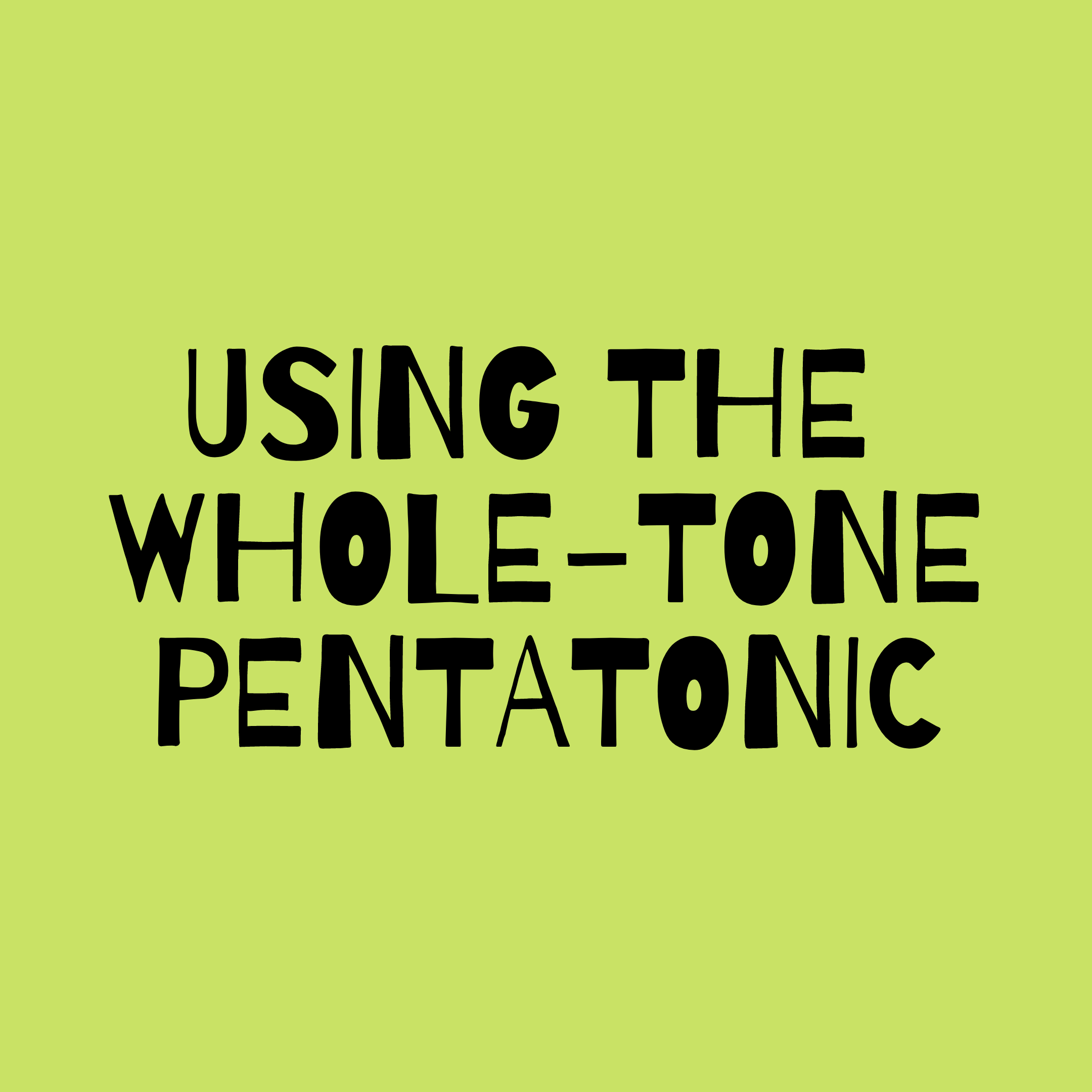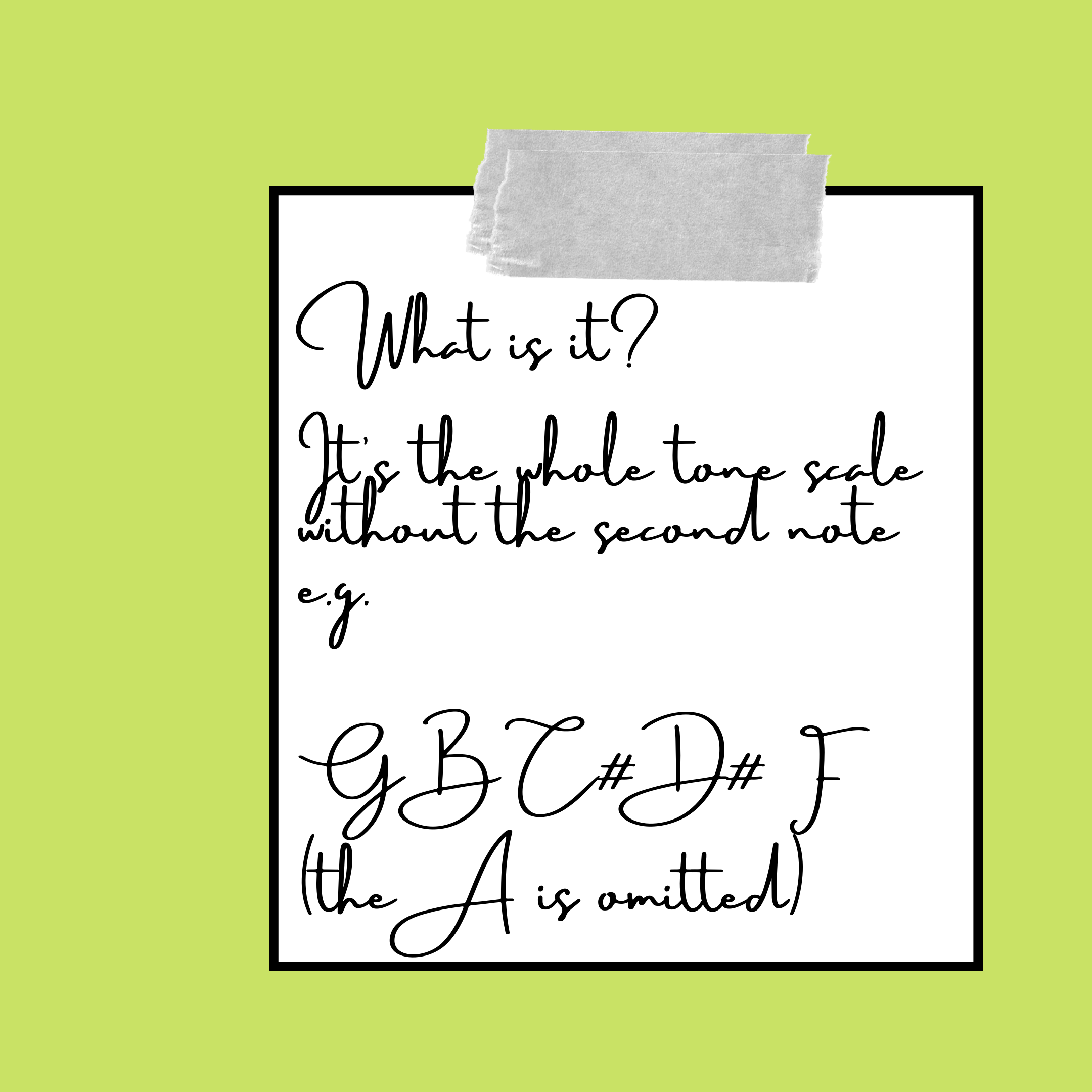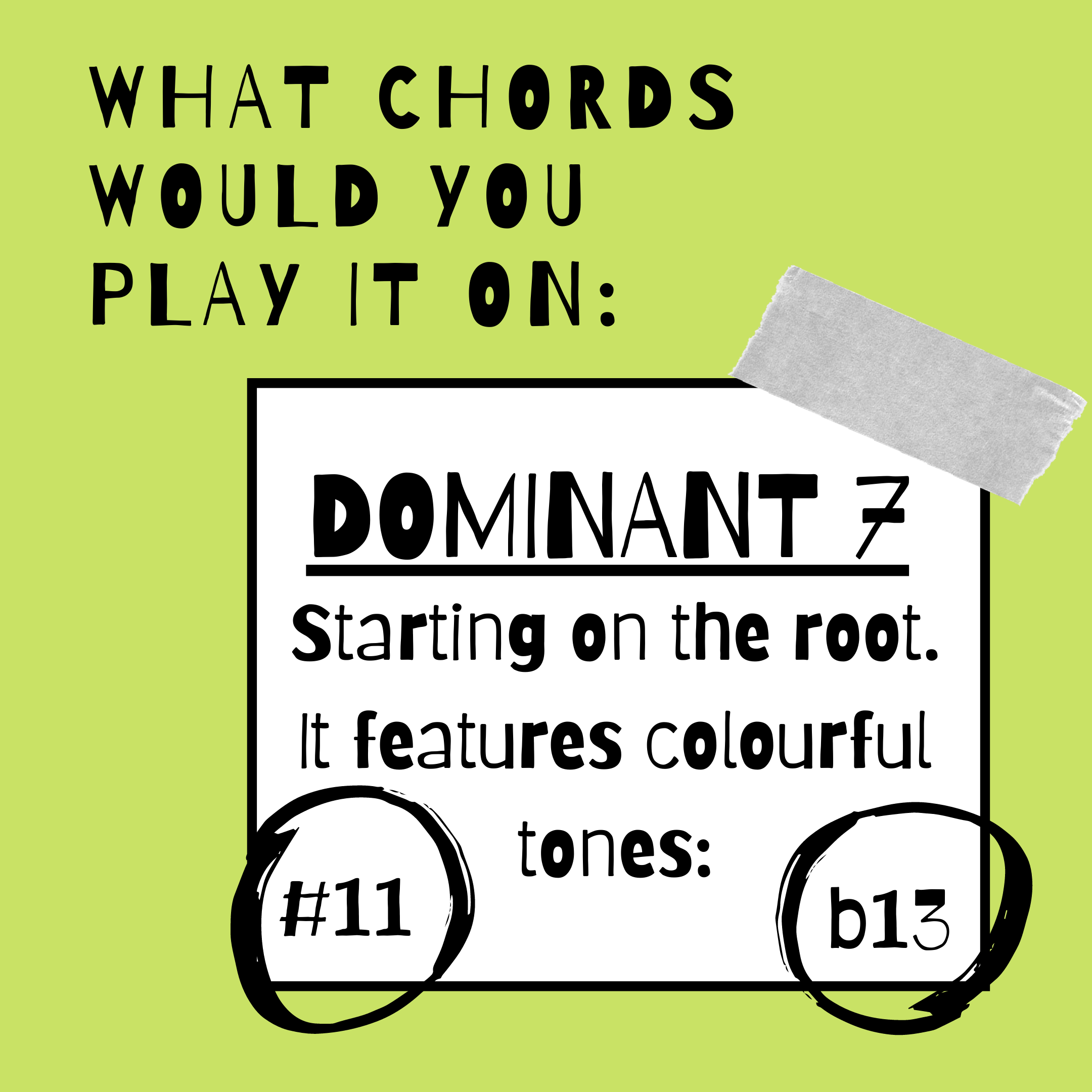Using The Whole-Tone Pentatonic
Here’s a brilliant scale that you might want to try out. It has a very modern vibe and it almost sounds “out-of-this-world” at times. As the name suggests, it’s a pentatonic. This means it has 5 notes. I love pentatonics for the ease that they can be played and for the intervals that can be produced when playing with the scale (especially when you start to skip/miss out notes - more on that another time) and this scale is no different, so let’s take a look.
So what is the whole-tone pentatonic? Well, it’s basically the whole-tone scale (which has 6 notes) but with the second note removed. If you’re not sure what a whole-tone scale is, don’t worry, just click here to learn about it.
You’ll probably be aware that there are only really two whole-tone scales, but with the whole-tone pentatonic it’s different. Because you’re omitting the second note, you need a root note from which to start. Therefore, there are a lot more variations, and yes, there are 12 whole-tone pentatonics. So, what chords would you play it on?
One of the possible chords you could use this pentatonic over is the dominant 7. The root of the chord would be the root of the whole-tone pentatonic that you use - so that’s easer to remember. For example, if the chord is G7, you’d use G whole-tone pentatonic (G, B, C#, D#/Eb, F). This works nicely because it contains the chord tones the root, the 3rd and the 7th, but it also contains the colourful chord tones of the #11th and the b13th. But there are other chords it can be used on.
The whole-tone pentatonic can also be used over a minor 7 chord or a minor major 7 chord. To find the correct whole-tone pentatonic, the root of the scale would be the major 7th of the chord. So, for example if the chord was Abminor7 or Abmin(maj7) the major 7th would be G, so you’d play the G whole-tone pentatonic, G, B, C#, D#, F. The chord tones you’d be hitting are the major 7th, the minor 3rd, the 11th, the 5th and the 13th, all of which are great chord tones to use and it will have a melodic minor sound (as well as the interesting sound of the whole-tone pentatonic itself).
So there you have it, start practising the 12 whole-tone pentatonics today and implement them in your jazz improvisation.



